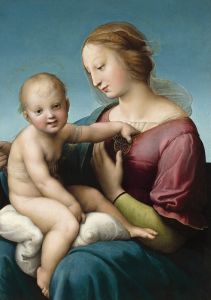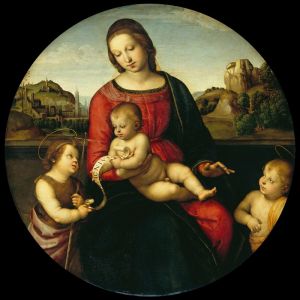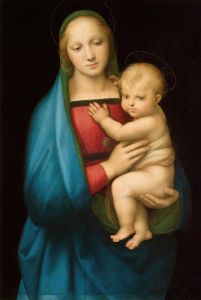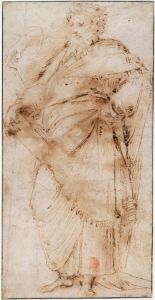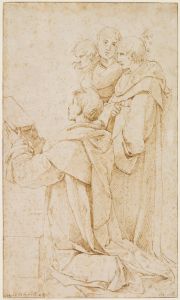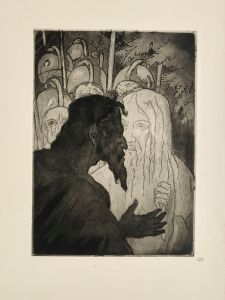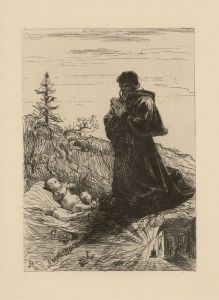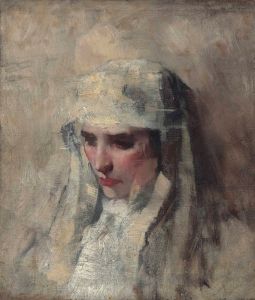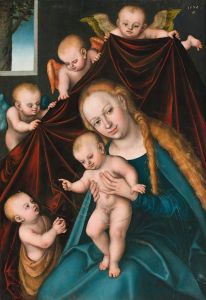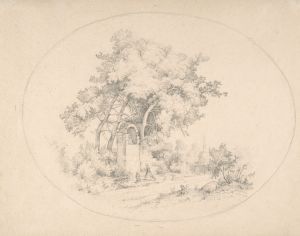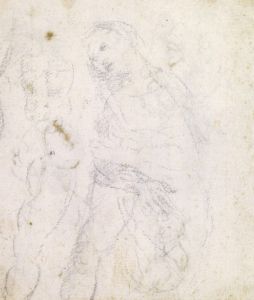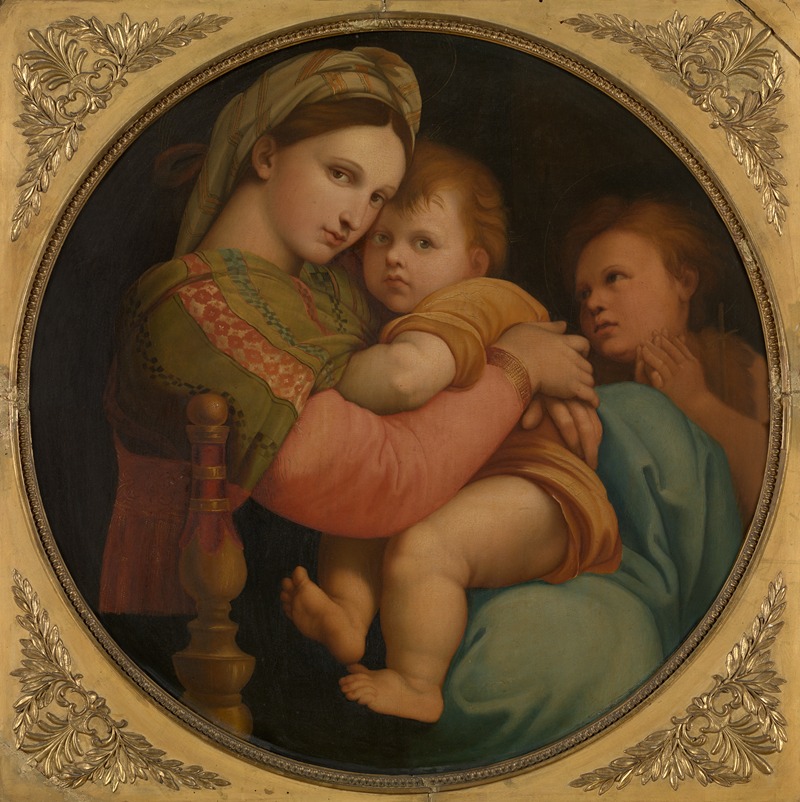
Madonna
A hand-painted replica of Raphael’s masterpiece Madonna, meticulously crafted by professional artists to capture the true essence of the original. Each piece is created with museum-quality canvas and rare mineral pigments, carefully painted by experienced artists with delicate brushstrokes and rich, layered colors to perfectly recreate the texture of the original artwork. Unlike machine-printed reproductions, this hand-painted version brings the painting to life, infused with the artist’s emotions and skill in every stroke. Whether for personal collection or home decoration, it instantly elevates the artistic atmosphere of any space.
Raphael, one of the most renowned artists of the Italian Renaissance, created several paintings featuring the Madonna, a central figure in Christian art representing the Virgin Mary. Among these works, "Madonna by Raphael" typically refers to one of his many depictions of the Madonna and Child, a theme he explored extensively throughout his career. Raphael's Madonnas are celebrated for their grace, beauty, and the harmonious composition that characterizes his style.
Raphael, born Raffaello Sanzio da Urbino in 1483, was an Italian painter and architect whose work is admired for its clarity of form and ease of composition. He was part of the High Renaissance movement, alongside other masters like Leonardo da Vinci and Michelangelo. Raphael's Madonnas are particularly noted for their serene and tender representations of the Virgin Mary and the Christ Child, often set against idyllic landscapes.
One of Raphael's most famous Madonna paintings is the "Sistine Madonna," created around 1512 for the church of San Sisto in Piacenza, Italy. This painting is renowned for its depiction of the Madonna holding the Christ Child, flanked by Saint Sixtus and Saint Barbara, with two cherubic angels gazing up from below. The "Sistine Madonna" is celebrated for its dynamic composition and the ethereal quality of the figures, which exemplify Raphael's mastery of form and color.
Another notable work is the "Madonna del Granduca," painted around 1505. This painting is characterized by its simplicity and the intimate portrayal of the Madonna and Child. The figures are set against a dark background, which highlights their serene expressions and Raphael's skillful use of light and shadow.
Raphael's "Madonna of the Goldfinch," created around 1505-1506, is another masterpiece that showcases his ability to blend religious themes with naturalistic settings. In this painting, the Madonna is depicted with the Christ Child and Saint John the Baptist as a child, with a goldfinch, symbolizing Christ's future Passion, perched in the hands of the young John. The painting is admired for its balanced composition and the gentle interaction between the figures.
Throughout his career, Raphael's depictions of the Madonna evolved, reflecting his growing mastery of anatomy, perspective, and emotion. His Madonnas are often seen as the epitome of Renaissance ideals, combining classical beauty with a deep sense of spirituality.
Raphael's influence on art was profound, and his Madonnas have inspired countless artists over the centuries. His ability to convey the divine through human form and his innovative compositions have left a lasting legacy in the world of art. Today, Raphael's Madonna paintings are housed in various museums and collections worldwide, where they continue to be studied and admired for their artistic and historical significance.





